This computational design project aims to inform a decision regarding a design problem that we run into in our Self-Sufficient Buildings course. The problem is to identify an optimal ratio between the height and number of “sand stoppers” on the roof of a budling that is built to be buried by sand over time. Our solution presents an approximation of the sand accumulation, informed by experiments and observations that has been done earlier in the course. it also identifies some promising candidates that can be taken into consideration moving forward in the project.

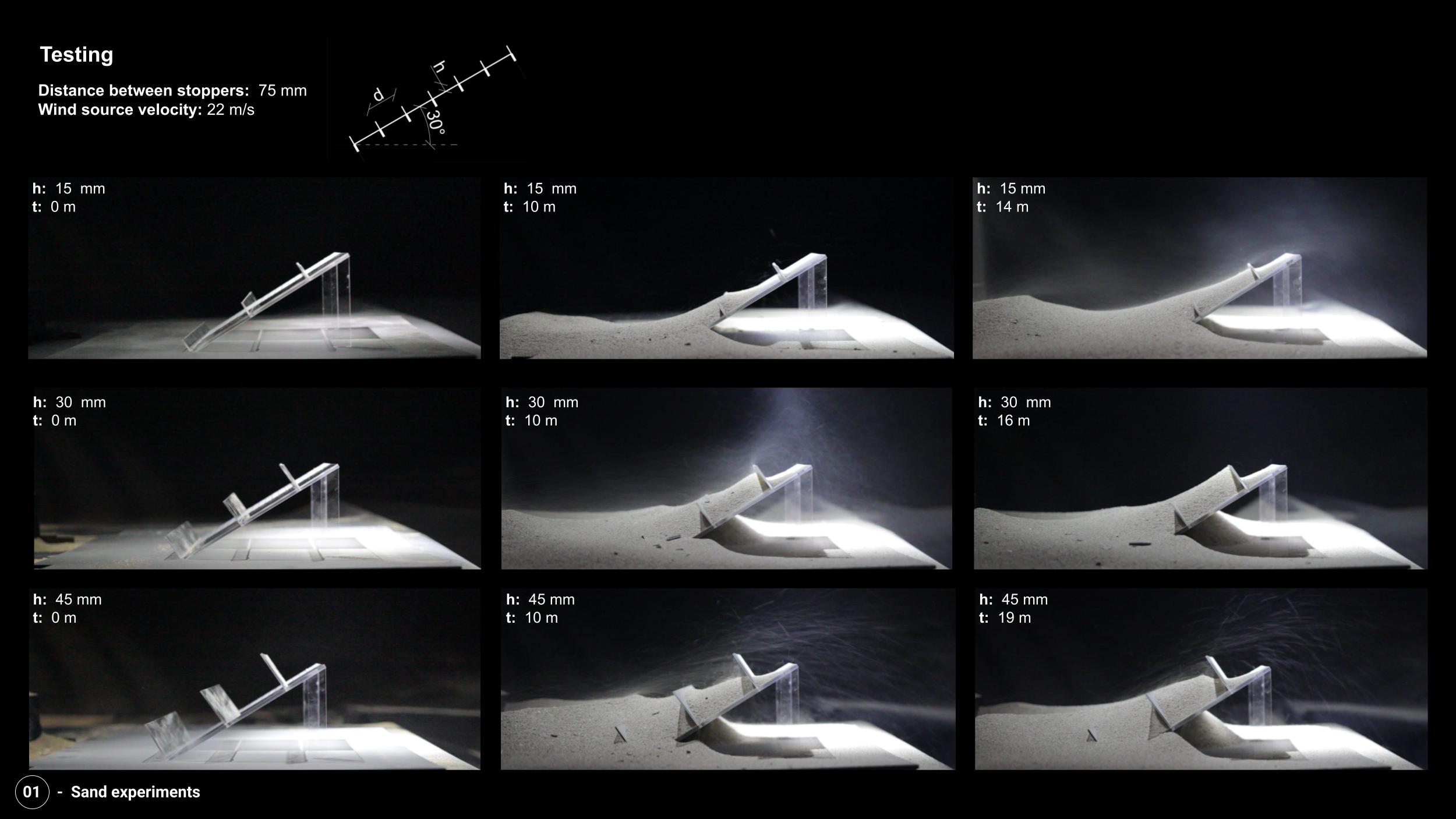
Sand experiments that were conducted prior to the projects beginning remained as an essential reference throughout the creation of our approximation. We constantly compared our approximation to what happened in the sand stopper tests. The tests showed here are difference in height at 30 degrees inclination. The reason for the inclination being 30 degrees is that 34 degrees is the natural angle of repose for sand.
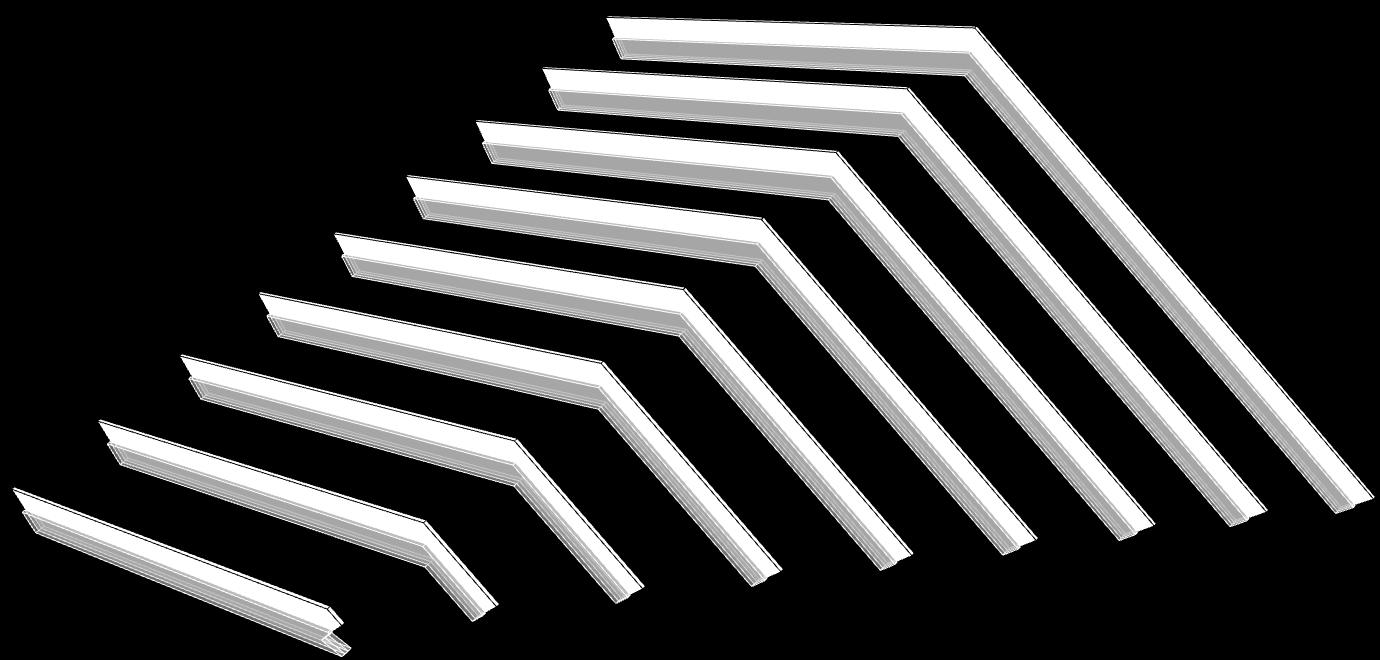
The sand dune is created as a cone that follows the inclined angle of repose in relation to our sand experiments. As the cone grows more cones appear further up on top of the structure. At one point the cone splits into two cones and the space between them is lofted in order to create a closed dune. They move outwards towards the corners of the sand plane as they grow larger and larger until they ultimately cover the entirety of the volume between the sand stoppers.
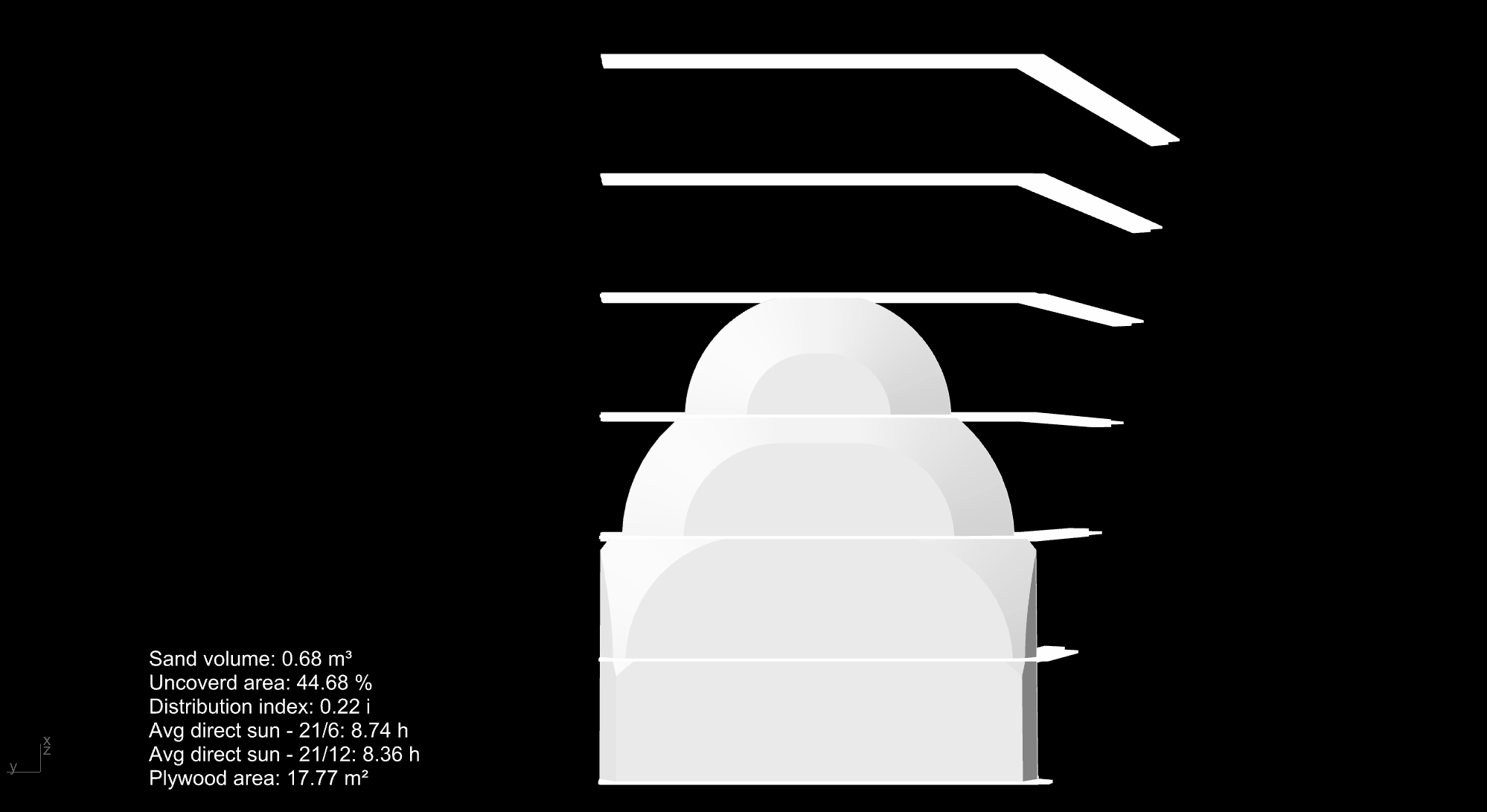
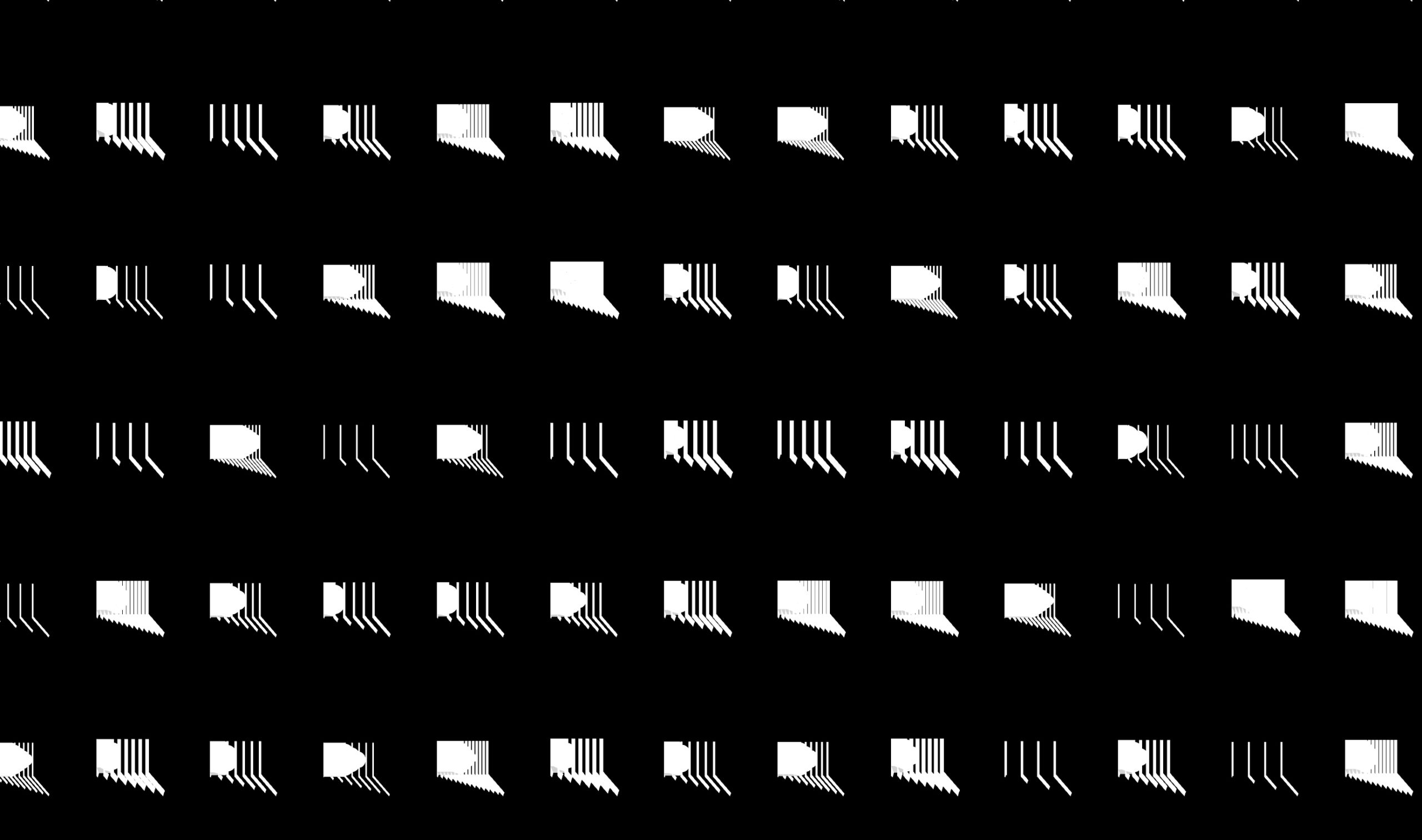

While generating the different combinations of number of stoppers and heights we aim to compare how to the same volume of sand is distributed onto the different geometries. In this case we would for instance expect to see that a candidate with short stoppers would allow a more even distribution than a candidate with long stoppers at the same volume, as the latter candidate would likely allow the sand to accumulate more locally at the beginning of the structure.
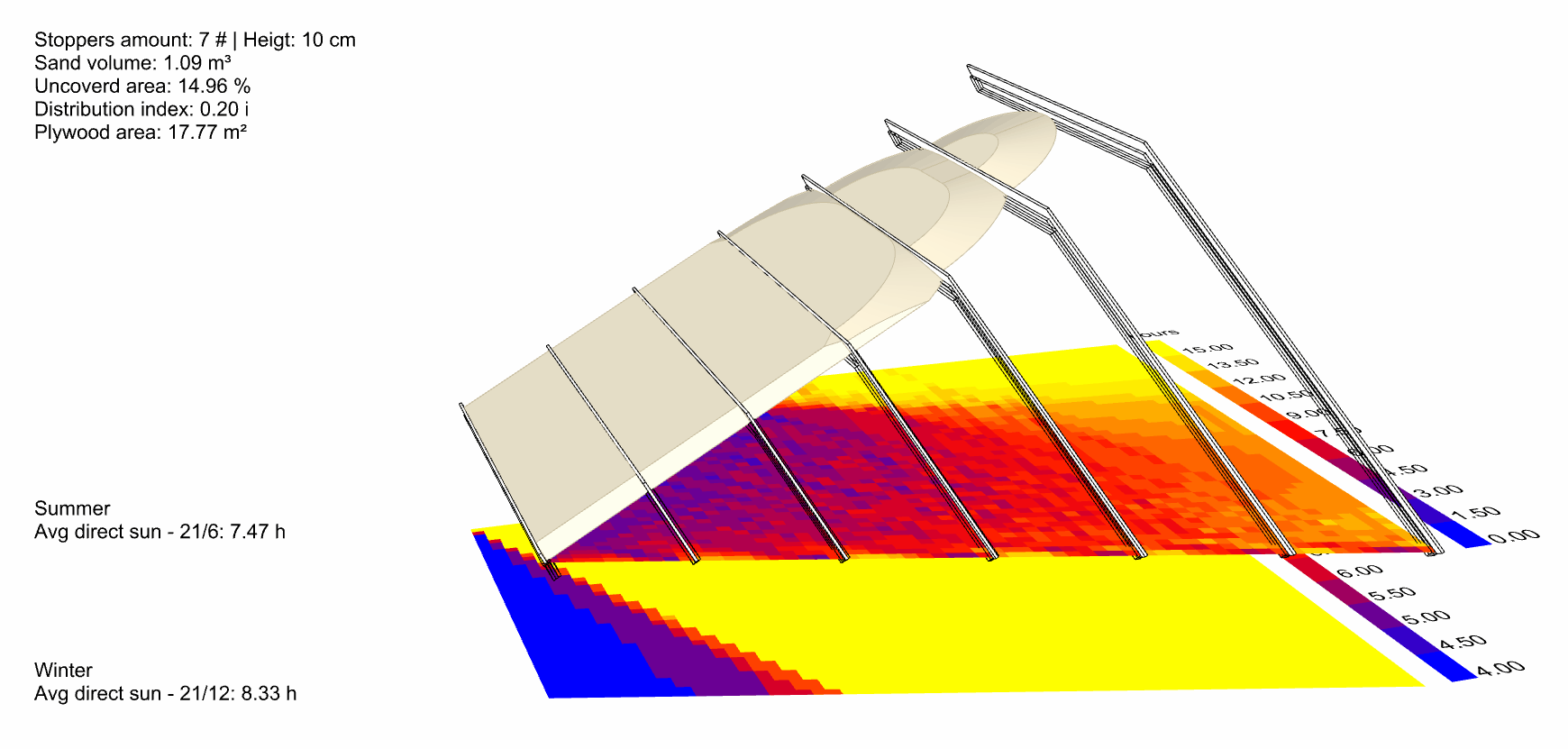
After developing an approximation with an acceptable resolution we could use this approximation to test how the sand would affect the light condition inside the building. In summer time we would want the highest amount of coverage in order to provide shading, in wintertime we would reward the opposite in order to provide heat. The building in oriented in relation to sun path in a way so that the sun would pass through both the roof, as well as the side window. This means that the sand coverage in general provides less coverage in the winter. We also set other fitness values such as material usage (lower is better), distribution index (more evenly distributed light area is better).

This generative process provided us with six candidates that you could argue would be good choices compared to other candidates. This does not mean that these solutions are optimal, or that they are exclusively the best options. But can help inform our decision about the ratio of stoppers and heights in our structure moving forward, as they are results of an approximative optimization and they have some similarities. For instance, they tend to have short stoppers rather than long stoppers. They also tend to allow the sand to move in a way that allows us to see the curvature of the sand dune. This information can be useful in our project moving forward.

